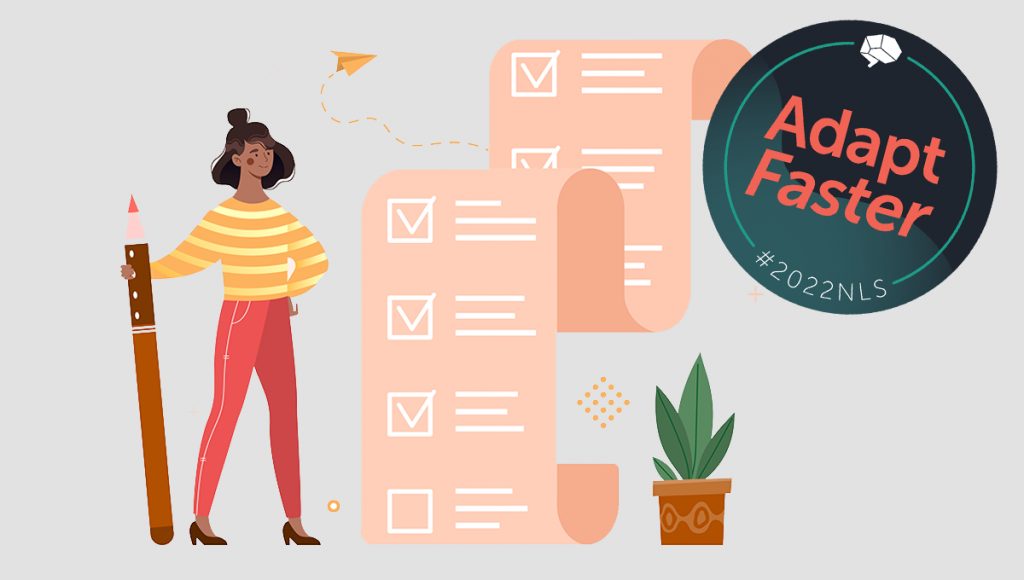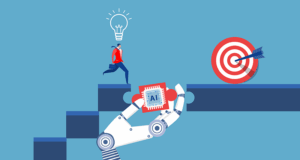Organizations everywhere are confronting the need for large-scale transformation to make cultures more inclusive, help employees be agile in an era of unprecedented disruption, and improve business continuity. As leaders work to implement these changes, one question underpins all their efforts: What’s the best way to make new habits stick?
To shed light on this complex question, we turned to Elliot Berkman, a psychologist at the University of Oregon and the associate managing director of the Center for Translational Neuroscience. We reached him at his home in Eugene, Oregon to ask about inclusion, organizational transformation, inclusion, and using rewards to reinforce new habits — topics he’ll be discussing at next month’s NeuroLeadership Summit.
NLI: Let’s start by talking about organizational change. What advice do you have for leaders and managers on how to go about it?
Elliot Berkman, Ph.D.: First, try to understand what really is the change. Not just at a low level, not what are the details of the change, but higher than that. How is this change going to affect an employee’s day-to-day life? Encourage employees to think through their own personal why. “Why am I here? Why do I want to do this work? Why am I attached to this particular mission?”
Q: So much of organizational change comes down to habit formation. Can you tell us about the three phases of this?
The first phase is initiation. That’s when you’re doing the behavior for the first time. That’s the most labor-intensive part because you’re doing something new, so it demands your attention. You have to figure out solutions to problems you haven’t solved before.
The second phase, confusingly, is called habit formation, even though that’s also the word for the whole process. That’s where the role of reward is really important. Making sure you are doing the new behavior, but also that it’s being reinforced in a consistent way.
The third phase is maintenance. That’s where the environment is the most important. You want to structure the environment to support the habit.
Q: How are companies bringing inclusion into organizational change these days?
Encourage employees to think about the organizational value — to take time and figure out why might this be personally important to them. Maybe the organization is thinking mostly about racial and ethnic inclusion, but maybe an employee has a disability that’s not visible. So for that person it might be: “For me what’s really important is ableism and disability inclusion.” OK, good, that’s a hook. An employee can attach to broad organizational values through that.
On the management side, changes to the environment can be difficult because people are incredibly sensitive to hypocrisy when it comes to organizational missions. You can very quickly undermine your mission if people feel like it’s not being lived out.
That’s definitely true in inclusion, where it’s so easy for missions to become empty if an employee’s day-to-day experience is, “Well, this is not an inclusive place. They just say it is, but it really isn’t.”
So be very careful about communication, about “what are we saying we are” vs. “what are we saying is an aspirational goal.”There’s definitely space for organizations to acknowledge “Look, we’re not there yet.” That’s okay. In fact, sometimes that’s a lot better because if you say “we’re there” and you’re not, then that’s going to undermine it.
Q: What’s an example of rewarding new, inclusive behaviors or restructuring the environment to support new habits?
It’s tricky. I’ve seen organizations use what you might call a “decision aid” for equity. At major decision points, you have this print-out and sometimes it’s laminated. You look at it and say, “What are the unintended consequences here? How could each of the options we’re considering potentially impact people differently?”
It’s a good structural intervention. If you’re asking people to do new things, you want to make sure it’s easy for people. So you build out the environment to make sure. That’s the idea behind laminated sheets. When you’re sitting there making a decision, it’s literally taped onto the desk right in front of you. There’s no way you can miss it.
Leaders also need to model new behaviors. Employees need to see the people at the head of the table actually following the procedure, and then be rewarded, maybe for being that one employee who raises their hand and says, “Hey, I think this decision could have an inequitable impact.”
The way leaders react to that is going to be really, really important. You want to reward that behavior. To say, “That was awesome. I’m really glad you brought that up. You’re right, let’s consider that.”
Q: That makes sense. I’ve heard leaders say employees should be encouraged to speak up. But I haven’t heard it framed as conditioning or reinforcement.
Yes, and it’s a twofer when it’s in a group context, because you’re rewarding them but you’re also modeling it. People are really good at vicarious rewards. “I just saw my coworker get rewarded for that. That’s going to make me more likely to do it.”
Q: You mentioned other kinds of rewards, like bonuses. Does the reward have to happen within a certain time after the behavior to be effective?
From a habit reinforcement perspective, the sooner the better. With habit learning — all the way down to the neurobiology of it — we know you want to reward the behavior immediately after.
I’d say the incentive structure doesn’t necessarily help build habits, but it helps with habit maintenance. And it provides additional reasons for somebody to engage in that behavior. I’ve seen HR or search firms tie their annual bonuses to the diversity of the candidate pools they assemble. That kind of incentive, even though it’s very distal, might not help habits, but it certainly will incentivize people because it will be top of mind. When it’s, “Oh, I’m assembling a pool for this position. I know that if I make it more diverse, I’m going to get more money,” that’s a good way to get it to happen.
Q: What other research on habits has intrigued you?
Particular to the pandemic, one of the fun things about habits is they’re actually easier to form in a new environment, because you’re not battling the old habits as strongly.
That’s my favorite part of habit literature. There are these fun studies of people who’ve just retired. It’s literally their first day of retirement, and the intervention is helping them form new health or exercise habits, and it’s actually easier because everything is new. You’re making choices about how to structure your world much more deliberately than you probably have in the previous year.
I think the pandemic could be a similar opportunity. Workplaces are changing. I encourage organizations to view that as an opportunity to think deliberately about these questions. How are we structuring the environment? Can we make those decisions consciously around the kinds of behaviors we want?







